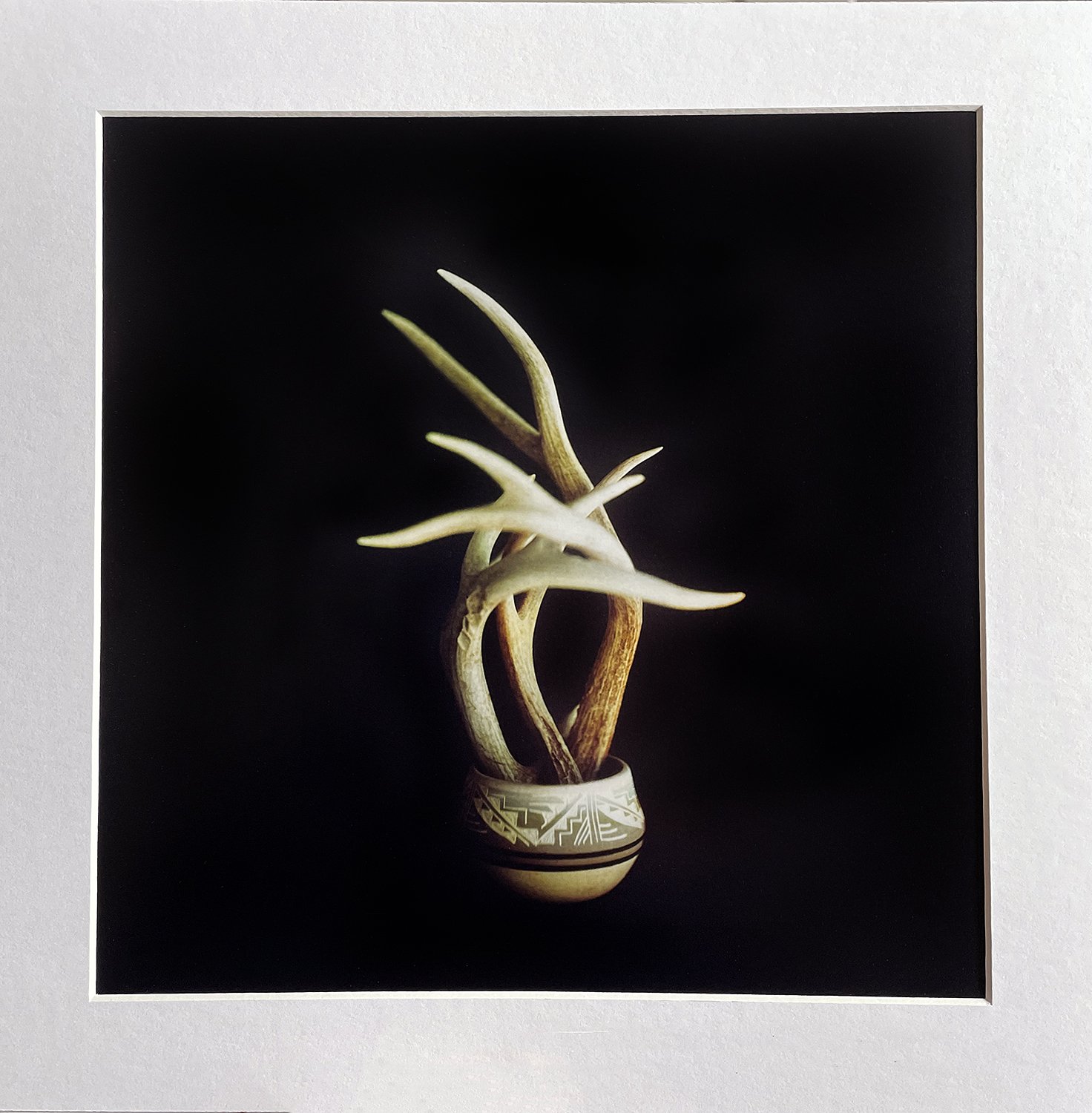A Gift with Every Book: A Signed “Deer Antlers” Print
I’ve decided to include a special gift with every copy of In the Shadow of Sun Mountain: a fine art print (copy) of Deer Antlers. You’ll find the original image on page 234 of the book—and it’s also the cover image. The original is a palladium print from a whole-plate wet collodion negative.
Let me be clear: this isn’t a palladium print. It’s a high-quality book print. It’s printed on 300-pound paper, produced by Mixam (the same company that printed the book). It’s an 8” x 10” print. That said, I was genuinely impressed when I saw the final result. The tones, the texture, the presence—it surprised me. It’s not the original, but it holds up.
The image means a lot to me personally. The antlers were found on my property in Colorado. The vessel they rest in was crafted by Ute artist L. Posey. But beyond that, the image carries a deeper symbolic weight in the context of the book.
Peter Wessel Zapffe’s essay The Last Messiah tells the story of a prehistoric giant elk whose antlers grew so massive, they ultimately pinned its head to the ground—leading to the species’ extinction. Zapffe saw the animal as a metaphor for human consciousness: our awareness of death, our tragic over-evolution of mind. The antlers became too heavy to carry.
That’s what this image is about. You’ll read more about it in the book.
So, with every book, you’ll get this print—a small artifact tied to a larger meditation on memory, death, and what it means to live with the knowledge of our own ending.




